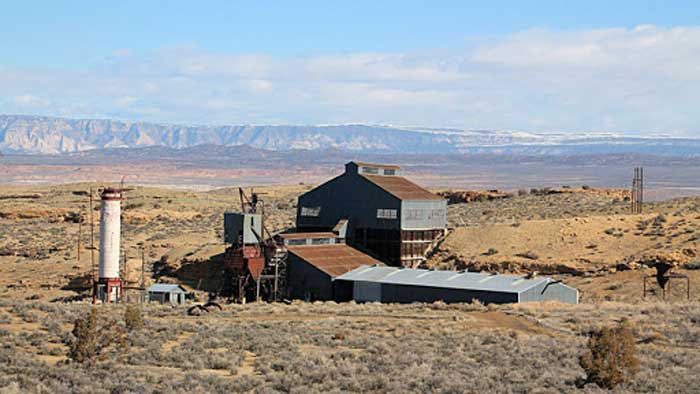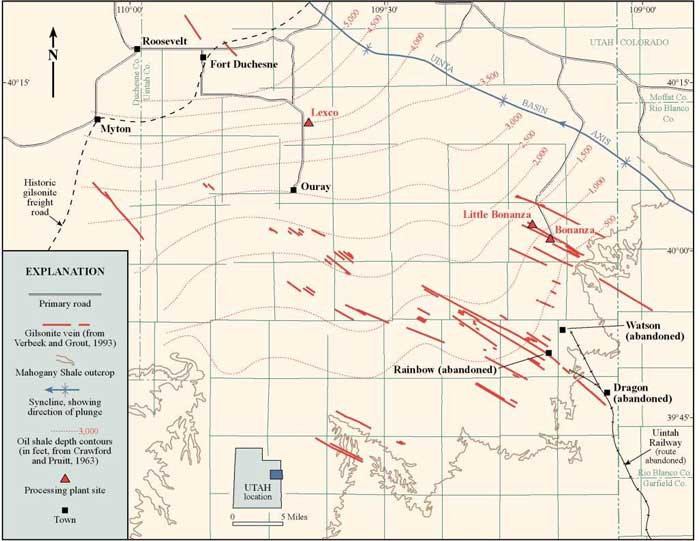Utah Gilsonite Mine
History of Gilsonite in Utah
Gilsonite was firstly known by Native Americans in the Utah area which then were offered to White-Men as coal for blacksmithing. Since using Gilsonite instead of coal is hazardous, the material soon became famous and several people including Samuel Gilson started working on development of material for different industries.

Eventually by obtaining most of the resources ownership in Utah Gilsonite mines, Samuel Gilson was able to make the first Gilsonite company in 1903 called the Gilson Asphaltum which later on was purchased by Chevron and partners and the name changed to American Gilsonite company in 1948 which owned all large veins of Utah Gilsonite mines along with most of smaller veins of Gilsonite in the Utah area and the situation has continued during the years.

Geologic Setting
Utah Gilsonite Mine veins which are somewhere around 50 million years old, are located in Tertiaryaged in the Uinta Basin. The explored formations of vein are found in Duchesne River, the Wasatch, Uinta and Green River. In the Wasatch Formation Gilsonite can be exploited from eastern edge which has escaped the Oil shale above.
Location
Utah Gilsonite Mines are founded in long, vertical, northwest-trending veins in a 60-mile by 30-mile block. The veins’ width can vary with an average of 1-2 meters. The veins of Utah Gilsonite mines are interestingly continuous and long. The vertical veins are mostly located in the Green River oil shale, so they are more vertically extensive to the northwest where they are not as deeply eroded.

Reserves
The primary reserve estimation of Utah Gilsonite mines was 45,000,000 tons which after years of exploitation with an average of 20-60,000 tons (with a spike of 470,000 tons in 1907 to feed the Gilsonite gasoline refinery), it had come down to 5,000,000 tons in 1980; estimated by American Gilsonite company. Therefore, already most of that ore from Utah Gilsonite mine has been extracted.
However, three factors could increase the total reserve of Gilsonite:
- Possibility of discovering new veins in Utah Gilsonite Mines in addition to increased reserve estimations of smaller veins which are already discovered in Utah area.
- Emerging new resources of Gilsonite outside Utah Gilsonite mines, including Iran Gilsonite veins estimated to be over 30,000,000 tons and only 2,000,000 tons have been exploited already. Another emerging resource – which is currently supplying to American Gilsonite Company to help economics of production and covers for lack of Utah Gilsonite mine reserves – is Colombian asphaltite with similar characteristics to Gilsonite and large reserves found in Magdalena Basin in Colombia estimated to have around 20,000,000 tons of untouched reserve; causing USA oil companies and American Gilsonite Company to divert investments and purchasing power to these resources.
- Scattered around the world, there are also different reserves of Natural Bitumen similar to Utah Gilsonite mine which could cause large scale discoveries any time in the future. (Gilsonite Global Reserves)






Leave a Reply
Want to join the discussion?Feel free to contribute!